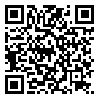BibTeX | RIS | EndNote | Medlars | ProCite | Reference Manager | RefWorks
Send citation to:
URL: http://jdisabilstud.org/article-1-3564-en.html
2- Professor, Shiraz University, Shiraz, Iran
Abstract
Background & Objectives: The main clinical symptoms of attention–deficit/hyperactivity disorder (ADHD) are inattention, impulsivity, and hyperactivity. Cognitive tasks, which are often used in research, reveal behavioral responses that indicate attention deficits or impulsive responses in individuals with ADHD. One of the components studied in children with ADHD is happiness. Happiness is the opposite of depression and can be described as a complex, multifaceted emotion that encompasses a range of positive emotions from contentment to extreme joy and can increase a person’s satisfaction with life. ADHD is resistant to treatment, and so far, the treatments used in this disorder have not achieved much success in treating ADHD. Few studies have been reported on the effectiveness of transcranial direct electrical stimulation of the brain on the psychological state of adolescents with ADHD. So, this study aimed to investigate the effectiveness of transcranial direct electrical stimulation (tDCS) of the brain on the happiness of adolescents aged 16 to 18 with ADHD living in Shiraz City, Iran.
Methods: The method of this study was quasi–experimental with a pretest–posttest design with a control group. Among adolescents with ADHD referring to psychology and psychiatric clinics in Shiraz in 2024, 30 eligible volunteers aged 16 to 18 were selected and entered into the study. Thirty eligible volunteers from the community were recruited into the study, and 15 were randomly assigned to the intervention group and 15 to the control group. Based on the initial consent of the subjects to participate in the study, the therapist and the sample subjects pledged to cooperate during the study, and there was no dropout during the study. The inclusion criteria included having ADHD confirmed by a psychiatrist, being between 16 and 18 years of age, not participating in other treatment sessions, and taking medication. The exclusion criteria were absent from a treatment session, and not completing the questionnaire during the study. Information about the research results remained confidential, and only the researcher had access to their files for data analysis. Before conducting the research, each sample member completed a consent form to participate in the research. In addition, the researchers pledged to provide free treatment sessions for the control group members if the research results were significant. The happiness variable scores were compared using the Oxford Happiness Questionnaire (Argyle et al., 1989) at two time points before and after the tDCS. SPSS version 22 software was used for data analysis. In the descriptive statistics section, the mean and standard deviation of the scores related to the variables were extracted. In the inferential statistics section, data analysis was performed using analysis of covariance. The significance level of the tests was set at 0.05.
Results: The results showed that the mean happiness variable scores in adolescents with ADHD in the intervention group and after receiving treatment increased significantly compared to the control group (p<0.001). Based on the results of the effect size, 64% of the difference between the intervention group and the control group in the happiness variable was due to electrical brain stimulation.
Conclusion: The results of this study showed that transcranial direct current stimulation can be used as a potentially effective treatment to improve happiness in adolescents with ADHD.
| Rights and permissions | |
 |
This work is licensed under a Creative Commons Attribution-NonCommercial 4.0 International License. |



